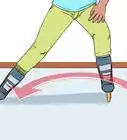wikiHow is a “wiki,” similar to Wikipedia, which means that many of our articles are co-written by multiple authors. To create this article, 36 people, some anonymous, worked to edit and improve it over time.
wikiHow marks an article as reader-approved once it receives enough positive feedback. This article has 13 testimonials from our readers, earning it our reader-approved status.
This article has been viewed 310,447 times.
Learn more...
Inline skating is commonly called "rollerblading," because Rollerblade Inc. was one of the first companies to manufacture inline skates back in the 1970s. Inline skates are fun and versatile, like ice skating on concrete. It's a great way of getting exercise and having fun. If you want to learn the basic gear and techniques, you can get started exploring this great outdoor sport.
Steps
Getting the Gear
-
1Get fitted for a pair of skates. At most sporting goods stores, you should be able to match your shoe size to an appropriate pair of skates. Inline skates should fit quite snugly, with your heel up against the back of the skate, supporting your ankles upright without becoming uncomfortable. It's important to avoid skates that are loose in any way, which can result in broken or sprained ankles quite easily.[1]
- Inline skates come in different types: multi-use, speed skates, street and stunt skates, and specialty cross-training skates. Basic multi-use skates are fine when you're just starting out. Try on different pairs to see which feel the best.
- Stand up in the skate. Your heels should fit firm and not be sliding in the boot and you should be able to wiggle your toes. Check that the inner liner is thick and has extra padding around the toe for comfort.
-
2Buy an appropriate helmet. Never inline skate without wearing a helmet to help protect your head from falls.[2] Add some reflective tape and it'll also alert drivers to your presence when it's poor visibility. Get a helmet with a safety standard mark on it.
- Helmets should be Consumer Product Safety Commission (CPSC) certified for use in skating, and should fit snugly on the head. Get a helmet with an adjustable chin strap, and tighten the strap so the helmet won't rock on the head.
Advertisement -
3Get additional safety gear. You might see people skating without any safety gear whatsoever, but it's important to use the some basic safety equipment when you're first starting out. It's inexpensive and will help to keep your from costly and serious injuries.[3] You'll want to get:
- Wrist guards. Standard guards will cover the top area of your hand. Some wrist guards also have a "skid pad" that covers the palm of your hand.
- Elbow pads. Fitting around the area of your elbow, these protect the fragile elbow region from falls.
- Knee pads. Ensure that these fit snugly around the knees and can be secured fast to prevent movement while you're skating.
-
4Wear appropriate protective clothing when you skate. Wear long sleeves and comfortable clothes when you skate, to protect yourself from scrapes. Since inline skating is a workout, wear clothes that breathe well and choose clothes that move easily and aren't too heavy to help keep yourself cool.
-
5Always wear protective gear. Just because you get better at skating doesn't mean you're invincible. You'll still trip over a stick or a pebble eventually. You'll still fall. Protective gear is important to prevent breakages and other problems from falls on hard surfaces. Don't try to be tough and go without them, or you risk serious injury.
Getting Started
-
1Find a flat and dry concrete area to practice skating. Empty parking lots, walking paths, and other flat even concrete areas are great for practicing your skating. Make sure that skating is permitted so that you won't be in anyone's way.[4]
- Look for unused parking lots. Check out businesses on the weekends for big open spaces that are perfect for practicing.
- Look in your local parks. Pathways and play areas might be suitable for inline skating. Just be sure it's not forbidden and that you won't be in the way of other park users.
- Special skate parks are common in many areas, but avoid going to a skate-park when you're first starting out. These are great when you're experienced, but can be a little intimidating and fast-paced when you're first starting out.
-
2Practice standing and balancing on your skates. Stand near a wall or other support for this exercise in the "ready position," with your feet approximately 6-10 in. (15-25 cm.) apart, with your knees bent and pushed forward in a V-position.
- Another way to stand up is to start with knees on the floor and the rest of your body upright. Then, keeping one foot kneeled down, bring the other foot forward such that the skate is on the floor (keep the skate in a diagonal position). Keeping your palms on the floor to form a diamond or triangle shape, repeat the previous step with the other foot. Then place your palms on your knees and slowly stand up without completely straightening out your knees.
- Lean forward slightly from your waist and put your arms out in front of you to hold your balance. Look straight ahead. Practice balancing in this position initially to get a feel for the position and the skates.
- Keep your feet shoulder width apart and your knees flexed slightly to keep yourself balanced and stable.
- Initially, you might like to try getting used to the feeling of your skates by walking around a bit on the grass. Then, return to a smooth surface and adopt the ready position.
-
3Take small steps to get comfortable. When you first start skating, it'll feel a little like you're just walking on a slippery pair of shoes. Learning to keep your weight on top of the skates is the best way to learn. Take small steps before you push off too hard and really get rolling, or your feet will slip out from under you.
- As you practice, try going a little faster each time to encourage your sense of balance with movement. Keep your speed moderate.
- You'll probably find your feet moving further apart as you try to maintain your balance. Stay balanced and go with it, and practice bringing your feet back closer together.
- Try the v-walk which is taking small step with one foot by placing it in a diagonal and repeating the same with the other foot such that they form a v again. However, don't join them such that the skates bang into each other and knock you over. Once you master this, increase the pace and step size bit by bit, without losing balance, and you will begin skating.
-
4Push off when you start feeling comfortable. When you take a step forward with one foot, push off with the other and glide forward on your set foot. Bring your push-off foot forward after the step and shift your weight to it. Then pushing off with your other foot. Keep alternating feet. You're skating.[5]
- Learn to balance on each leg as you glide. Transfer the weight from your back foot to your front foot as you do the push and glide movement. Do this really slowly to begin with, until it begins to feel normal.
- Practice skating on one foot only after a while. The more comfortable you are on each foot independently, the better a skater you'll be. Glide on the left foot, then on the right foot, in turns, and have the non-gliding foot off the ground to get extra comfortable.
-
5Learn to stop using the brake pad. While some beginners like to stop by crashing into something, there are a variety of different ways to stop once you've gotten started that don't involve slamming into a wall. You'll become more comfortable on your skates if you can learn to stop comfortably.
- Most inline skates are fitted with brake pads at the back. To stop, put one foot in front of the other and lift the toe of the front foot while leaning backward, to help the heel brake rub on the ground to slow you down. Go slowly to practice.[6]
- When you get more comfortable on your skates, you can turn your ankles in or out to form a V shape, or putting one skate perpendicular to the other to make a T-shape. This is a technique commonly used on ice skates, allowing you to use the wheels like brakes that slow you down.
- Lean forward, shifting the weight to the forward foot by bending your forward knee.
- Place the back foot such that the knee is straightened out and the skate wheels are sliding against the ground, almost flat on the ground.
- Increase the pressure on the back foot by flicking it and locking the foot firmly in that position to make a smooth stop
- Start practicing this method once you are an intermediate skater. Practice by keeping the foot without the braking pad as the back foot and once you master this brake, the braking pad can be removed and you can practice with the other foot too.
- Use brake pads after slowing down using other methods if you were going at very high speeds. Otherwise the pads could get damaged very easily.
Staying Safe
-
1Learn to fall properly. When you fall, bend your knees, put out your arms, and fall forward to catch your weight on your wrist-guards and glide to a stop. If you do it right you should fall right on your knee pads and other pads, and you'll be able to get back up and try again.
- Every skater falls eventually. Usually, it'll happen not when you're first starting out but can occur when you get a little comfortable and cocky. It's important to always wear your protective pads to keep yourself as safe as possible.
-
2Go slowly. It's important to skate at a moderate speed, even as you get more and more comfortable. It's fun to go fast, of course, but it's important to stay aware of obstacles that might be in your way to keep yourself as safe as possible.
-
3Be alert. It's your responsibility as a skater to be alert for others around you, not the other way around. Show other users of walkways, parks, and the like that your skating doesn't threaten their enjoyment either. Things to bear in mind include:
- Always keep an eye out for pedestrians, strollers, young children, people who haven't noticed your presence, bicycle riders and any sudden changes around you.
-
4Keep practicing. Once you're comfortable with balance, gliding along and stopping, you can start to learn more advanced elements of inline skating, such as making turns and then getting ready for ramps, racing, grinding and even competing.
Community Q&A
-
QuestionHow long will it take to learn roller skating?
 Community AnswerIt depends more on you than anything else. Many people can start skating, turning, and stopping at low speed after their first day. Most people feel perfectly comfortable after 1-2 months. It can take years, however, to move smoothly and fluidly without thought.
Community AnswerIt depends more on you than anything else. Many people can start skating, turning, and stopping at low speed after their first day. Most people feel perfectly comfortable after 1-2 months. It can take years, however, to move smoothly and fluidly without thought. -
QuestionIf I know how to roller skate, will inline skating be easier?
 Community AnswerTo some extent, but inline skating requires a lot more balance, so you will probably need to work on that a bit.
Community AnswerTo some extent, but inline skating requires a lot more balance, so you will probably need to work on that a bit. -
QuestionHow can I focus and not worry about falling?
 RaifCommunity AnswerTry skating with a partner who is more experienced. Hold onto them if you feel like you're going to fall. They will help you keep your balance.
RaifCommunity AnswerTry skating with a partner who is more experienced. Hold onto them if you feel like you're going to fall. They will help you keep your balance.
Warnings
- Do not ride on wet roads as you risk falling. However, if a wet road does come up on the way, bring your skates to a scissors position by bringing one foot in front of the other in almost a straight line. The same method can be used to overcome obstacles like an area strewn with sticks or rocks.⧼thumbs_response⧽
- Be sure to check your brake pads before each skate. If they are worn out, you should replace them.⧼thumbs_response⧽
Things You'll Need
- Inline skates
- Safety gear
- Water
References
- ↑ http://www.inlineskatempls.com/?page_id=8753#.XNgCLo4zZPY
- ↑ http://www.inlineplanet.com/Articles/don'thit(ouch!)t.html
- ↑ http://www.inlineplanet.com/Articles/don'thit(ouch!)t.html
- ↑ https://boardblazers.com/blogs/all/10-sick-skate-spots-without-a-skatepark-nearby
- ↑ http://healthyliving.azcentral.com/tips-learning-rollerblade-17512.html
- ↑ http://www.inlineplanet.com/Departments/Beginners/BeginnersGuide.html
About This Article
Inline skating, also known as rollerblading, is a fun way to spend some time outside. Before you start, make sure your skates fit properly and you have protective gear, like a helmet, knee pads, and pants and long sleeves, which will protect your skin if you fall. Find an unused flat, dry concrete area to practice on, like a parking lot or walking path. Start by taking small steps, and focus on keeping your weight directly above the skates so you don’t slip. When you feel more comfortable, take small diagonal steps to get moving faster. As you get going, practice using your brake pads, which are located on the heel of the skate. To stop, put one foot in front of the other and pull the heel of your back foot down while leaning back very slightly. To learn how to safely fall on inline skates, read on!
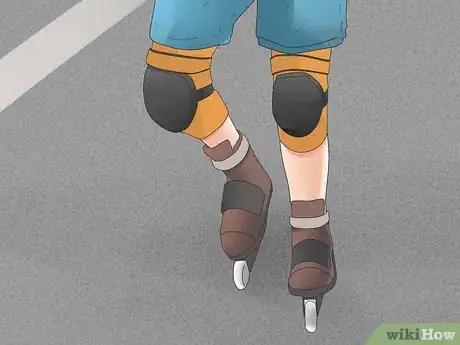
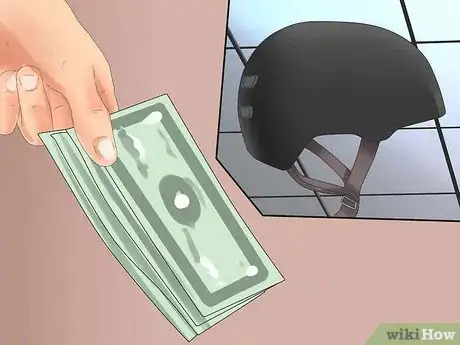
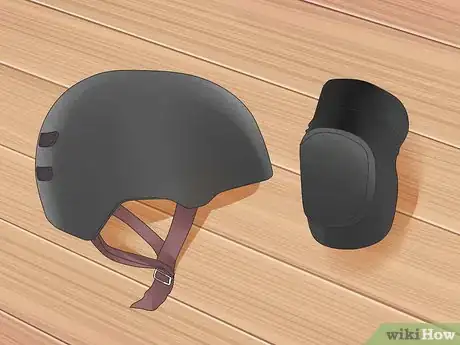
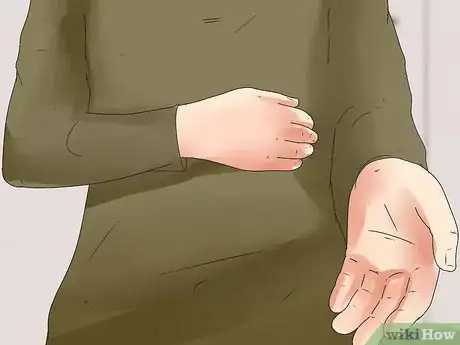
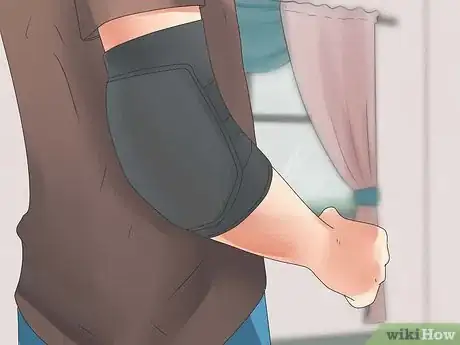
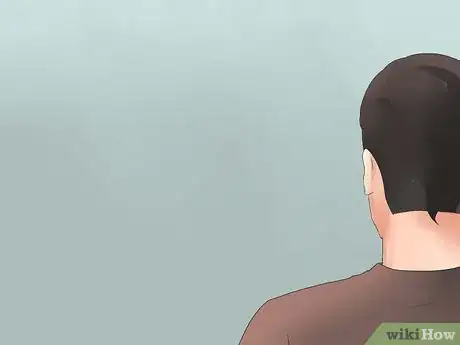
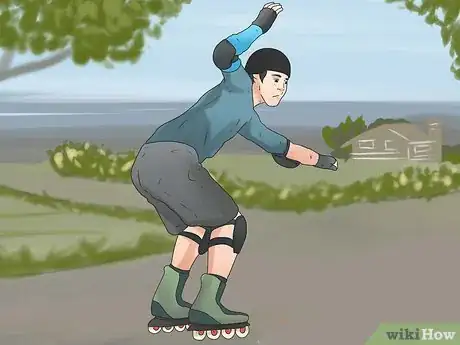
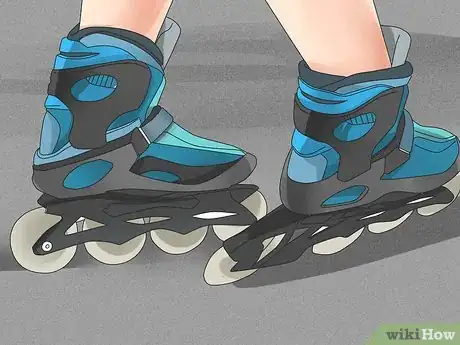
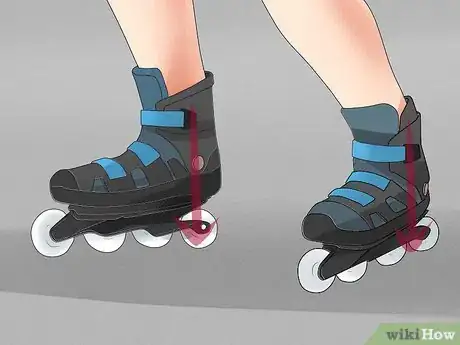
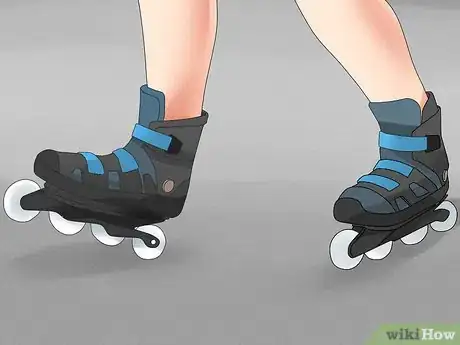
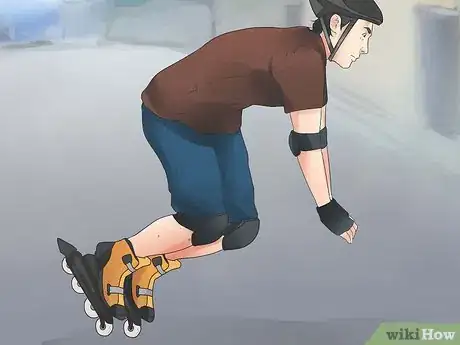
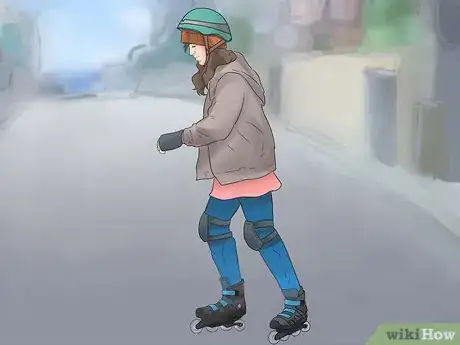
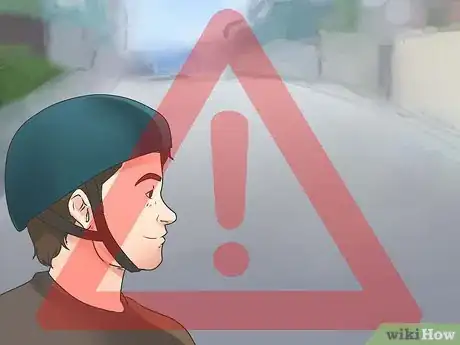
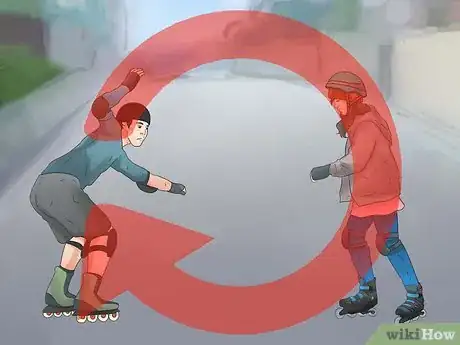
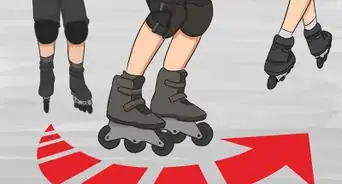
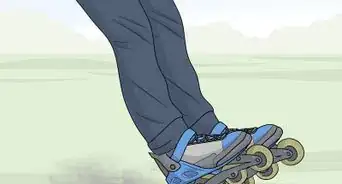
-Step-14.webp)
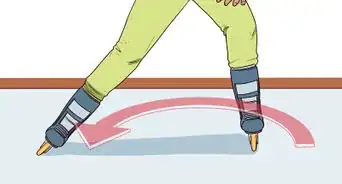
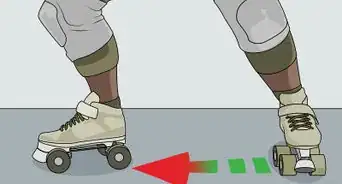
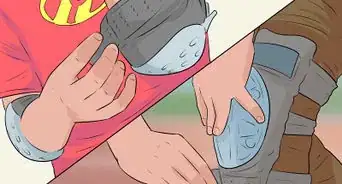
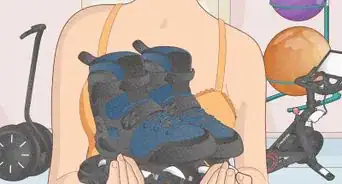
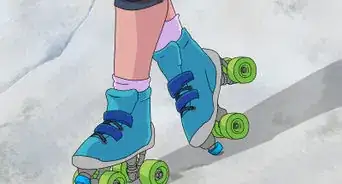
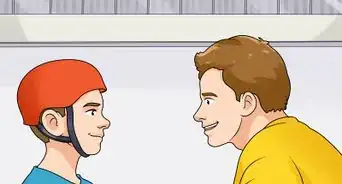
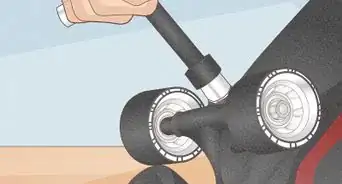
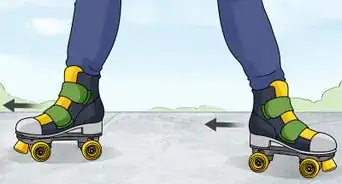
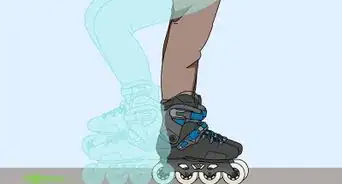
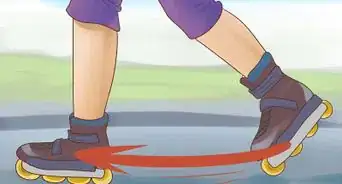
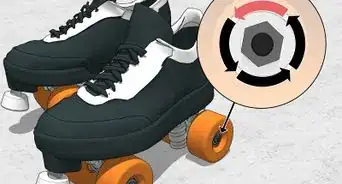









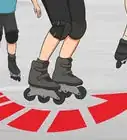
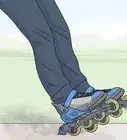
-Step-14.webp)
